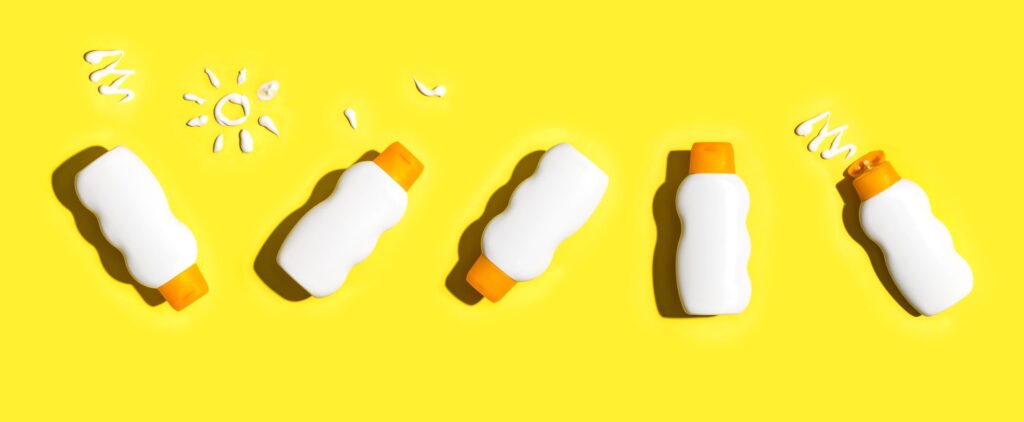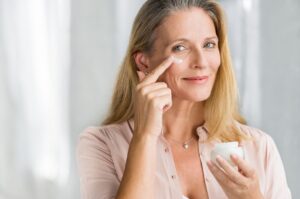[prg-row][prg-column class=”prg-column prg-col-md-3″ width_md=”3″]

Dr. Euphemia Mu, Dermatology, Piedmont Plastic Surgery & Dermatology
[/prg-column][prg-column class=”prg-column prg-col-md-9″ width_md=”9″]
Our very own Dr. Kingsley had the opportunity to sit down with Dr. Euphemia Mu to discuss the importance of skincare and regular visits with your healthcare provider. Request an appointment online using our secure form to meet with one of our providers!
Give us the skinny about yourself. Training, practice location, clinical interests. Life outside of medicine.
I grew up in Charlotte, NC, received my bachelor’s degree from Princeton University, and attended medical school at Johns Hopkins University. After my residency at the Ronald O. Perelman Department of Dermatology at New York University, I completed my Micrographic Surgery and Dermatologic Oncology fellowship with Dr. Desiree Ratner, a nationally renowned dermatologic surgeon in Manhattan. I currently work as a Mohs surgeon and dermatologist at Piedmont Plastic Surgery & Dermatology in Cornelius and Denver, NC. I practice medical, surgical, and cosmetic dermatology and specializes in treating high-risk skin cancers. Outside of medicine, I enjoy running, dancing, and watching nostalgic movies.
The sunscreen recalls are downright nerve-wracking, please help clear up the confusion.
The reason there have been sunscreen recalls is because in May of 2021 Valisure (a watchdog independent lab) reported benzene in trace amounts in a small number of aerosol sunscreens. Benzene is used in the production of petroleum and plastic, and we can be exposed to benzene routinely through gasoline, pollution, and cigarette smoke. Concerningly, benzene is a known carcinogen associated with cancers like leukemia and lymphoma. It was recently detected in certain aerosol sunscreens due to a supply chain issue that led to contamination of certain batches of products. Notably, this is not an issue with sunscreen active ingredients. Johnson & Johnson recalled a number of Neutrogena and Aveeno aerosol sunscreen sprays that were found to be potentially at risk of exposure. Using sunscreen lotions and powders are deemed safe, effective, and recommended for protection against sun damage by the American Academy of Dermatology (AAD) and the US Food and Drug Administration (FDA).
What are important ingredients to look for in sunscreen? What are things to dodge?
The two most important characteristics to look for in sunscreens are: broad-spectrum (protects against UVA and UVB) and has a SPF 30 or higher. If you are active, a sunscreen with water resistance will also be more effective. When outside, sunscreen should be re-applied every two hours.
There are also two different types of sunscreens:
Chemical sunscreens work like a sponge that absorbs the sun’s rays. They contain one of the following active ingredients: oxybenzone, avobenzone, octisalate, octocrylene, homosalate, and octinoxate. These tend to be easier to rub in without leaving a white residue.
Physical sunscreens work like a shield and deflect the sun’s rays. They contain the active ingredients: zinc oxide and/or titanium dioxide. They tend to leave more of a white residue on the skin but are theoretically safer to use on children as there is less risk of topical absorption.

Besides the obvious that sunscreen protects against skin cancer, are there other additional benefits? Should I be using a moisturizer with SPF daily even when I am in the office and not likely to see a ray of sunlight?
In addition to protecting against skin cancer, sunscreen also helps protect against premature photoaging. UV radiation can cause both short-term sunburns and long-term collagen and DNA damage leading to visible wrinkles, melasma, keratoses, skin texture changes, and pigmentation. Dermatologists recommend using a moisturizer with SPF daily to protect against unexpected, intermittent sun exposure… even walking to the parking lot can lead to intense, direct sun especially during the summer! Protect your skin by covering up, staying in the shade, and finding a sunscreen you enjoy!
For the love of sunscreen and sand, I re-apply sunscreen multiple times to my children’s eye area and they always seem to get a little more sun in these areas. Any tricks doc?
Most sunscreens are safe to use near the eyes, however, this can be a delicate and sensitive area! Mineral sunscreens using zinc or titanium dioxide are good choices for sensitive skin as they won’t sting the eyes in sweaty conditions. Stick sunscreens work well around the eyes for a less messy application. Tinted mineral powders and cream concealers that have SPF ratings are also specifically made for use around the eyes. If sunscreen gets in the eye, it’s not dangerous but flush the eye with water as soon as possible. Broad-brimmed hats and UV-blocking sunglasses are also important tools for helping shade the face and eyes from the sun.

Common parent question especially for families in sunny NC – I have a 4-month-old and we are finally breaking out of the house and going to the beach. Sunscreen labels state it is for use in 6 months and older. Ahh – what do I do?
Sunscreen use in children younger than six months of age is discouraged given the lack of safety studies in this youngest age group. Instead, parents are encouraged to protect babies from direct sun rays for prolonged (greater than 20 minutes) periods of time or during peak sun hours (10 am to 4 pm). Take advantage of the cute and fashionable sun-protective clothing, hats, and sunglasses that are now available! Umbrellas, canopies, and hoods on strollers can also provide important shade and sun protection.
The annual skin checks – why are they important to carve out of my busy schedule? My husband offered to do the skin check, but seriously, what consists of a good skin check by a dermatology provider? I’ve heard that every time my friend goes, they are always doing a biopsy that comes back benign, how do I avoid being sliced and diced?
Skin cancer is both the most common and most preventable type of cancer diagnosed in the US. Annual full skin exams are therefore an important part of recommended routine healthcare screening, similar to dental or eye exams. The AAD recommends a full-body skin exam once a year with a board-certified dermatologist to screen for skin cancer. Those with blonde or red hair, light eye colors, skin that freckles or burns easily, a family history of skin cancer, a personal history of blistering sunburns, unusual moles, history of tanning bed use, or suspicious or changing moles are at a higher chance for developing skin cancer and are especially encouraged to get regular skin exams. A full skin exam involves changing into a gown and having a dermatologist examine the skin from head to toe, including the places that are difficult to monitor on yourself including the top of the scalp, the bottom of the feet, and middle of the back. Be sure to bring up any changing, bleeding, dark, or symptomatic lesions to your dermatologist! If there is a spot suspicious for skin cancer, your dermatologist may consider doing a biopsy to help diagnose the lesion under a microscope. As with all medical care, you are your own greatest advocate. Don’t hesitate to let your dermatologist know if you prefer to clinically monitor a spot instead of a biopsy, especially if the spot has been stable for many years. Partner with your dermatologist to promote lifelong good skin health!
I want to age gracefully and minimize the impact of life and kids – what should I be putting on my face daily to minimize those fine lines and wrinkles? There are soooo many products out there!
Good question – there are so many skin products available that it can be overwhelming to figure out what’s necessary. In dermatology, the three products that are considered ‘musts’ for preventative skincare are: a Vitamin C serum, a retinoid cream, and a moisturizer with a sunscreen. Vitamin C is a powerful antioxidant that helps to brighten, fights inflammation, and is required for collagen synthesis. Retinoids are derivatives of Vitamin A that help even skin tone, decrease pore size, improve texture, and decrease fine wrinkling. It is one of the most well-studied ingredients in dermatology for its resurfacing and rejuvenating properties! Use of both Vitamin C and retinoids requires a few weeks for your skin to adapt, so start these products slowly and build up as tolerated to make this part of your regular skincare routine! Finally, as mentioned before, moisturizer with a sunscreen is imperative to prevent premature skin aging and sun damage. New formulations avoid the white chalky appearance formerly associated with sunscreens, and find a combination that makes you look and feel your best!

Holy mole – a new dark spot! Do I rush to my doctor or do I sweat it out? For how long? What things do I need to be concerned about when a new spot makes its appearance?
There are numerous common and benign reasons for having a dark spot on the skin including freckles, moles, keratoses, melasma, and post-inflammatory pigmentation. It is common for new moles to appear before and during our 20s, but moles that appear later in life should be viewed more cautiously. Any mole that changes, is asymmetric in color or shape, is larger than a pencil eraser, or is otherwise unlike other lesions on the skin should be checked at the earliest opportunity by your primary care physician and/or dermatologist. Any time there is a dark spot on the skin or nails, it is important to make sure the lesion is not melanoma, which is one of the least common but most fatal forms of skin cancer. Melanoma is diagnosed on skin biopsy and early detection leads to an excellent cure rate. It’s never too soon or too late to take great care of your skin!
[/prg-column][/prg-row]





